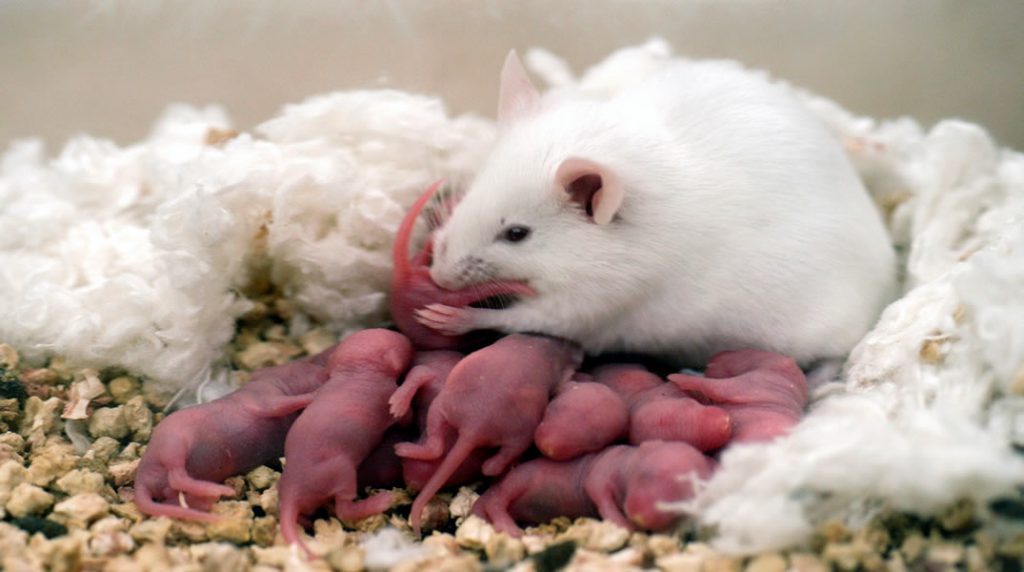Scientists funded by the Ramazzini Institute, an international cancer research non-profit based in Italy, have just published the results of a pilot program that studied the impacts of low-dose glyphosate exposure on endocrine functions like sexual development and growth.
The research team tested out both glyphosate alone and a formulated glyphsoate-based herbicide (Roundup Bioflow), administering it in water to 24 mother rats and 108 of their offspring at a daily dose equivalent to 1.75 mg for each kilogram of body weight. This is equal to the chronic Reference Dose (cRfD) set by the EPA, also known as the Acceptable Daily Intake (see our Risk Assessment and Regulation section for lots of background on this). In other words, they administered their rats a daily dose of glyphosate considered to be “safe” by the EPA.
This pilot study reports that both glyphosate and Roundup Bioflow had significant impacts on endocrine function and sexual development. However, the effect of pure glyphsoate was significant only for two factors in male rats, while the GBH tested impacted both male and female rats in several ways.
Specific findings include:
Impacts on reproductive development –
The anogenital distance, or AGD, is a measurement of the length of skin between the penis/vagina and the anus. It is an important indicator of endocrine disruption and has “emerged as an informative and valid biomarker” of developmental impacts on reproduction (Manservisi et al., 2019). Glyphosate and Roundup were both statistically linked to a larger AGD in this study, although the affect was seen in both sexes for Roundup Bioflow, but just in males for glyphosate alone. Female rats exposed to Roundup also showed a significant delay in the date of their first estrous, another important reproductive milestone.
Changes in Hormone Profiles-
Just the glyphosate treated rats showed an increase in a single thyroid hormone and one hormone ratio, while the Roundup-exposed group developed multiple hormone changes. The hormones affected were derived from the pituitary gland, thyroid, and sex organs, demonstrating impacts across multiple elements of the endocrine systems. In all, eight hormonal markers were statistically effected by Roundup Bioflow. Some of these impacts were limited to just males or females, while some were observed in both.
When looked at in full (see the complete paper here to view the results in detail), a couple of key takeaways rise to the top: 1) “the commercial formulation Roundup Bioflow was definitely more potent than glyphosate alone,” and 2) more prolonged exposure to glyphosate had a greater impact on hormone concentrations (Manservisi et al., 2019).
The authors write that their results provide “evidence of concern for reproductive toxicity via an endocrine disruption mechanism” (Manservisi et al., 2019).
They also make a point that is central to the 2019 glyphosate genotoxicity paper we highlighted here on Hygeia — regulatory agencies really need to include toxicity experiments conducted with formulated herbicides, not just pure active ingredients. And, they remind us of an important barrier- many of the adjuvants that are added to herbicides are proprietary and thus undisclosed to scientists, making independent research on their toxicity very difficult.
Source:
Manservisi, Fabiana, Lesseur, Corina, Panzacchi, Simona, Mandrioli, Daniele, Falcioni, Laura, Bua, Luciano, Manservigi, Marco, Spinaci, Marcella, Galeati, Giovanna, Mantovani, Alberto, Lorenzetti, Stefano, Miglio, Rossella, Andrade, Anderson Martino, Kristensen, David Møbjerg, Perry, Melissa J., Swan, Shanna H., Chen, Jia, & Belpoggi, Fiorella, “The Ramazzini Institute 13-week pilot study glyphosate-based herbicides administered at human-equivalent dose to Sprague Dawley rats: effects on development and endocrine system,” Environmental Health, 2019, 18(1). DOI:10.1186/s12940-019-0453-y.

